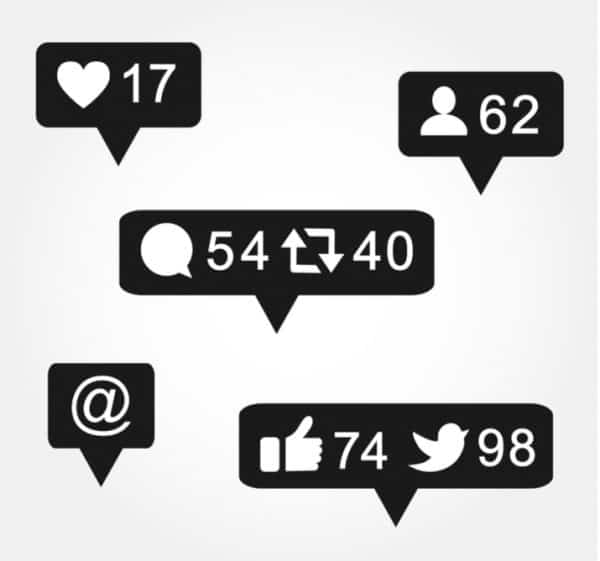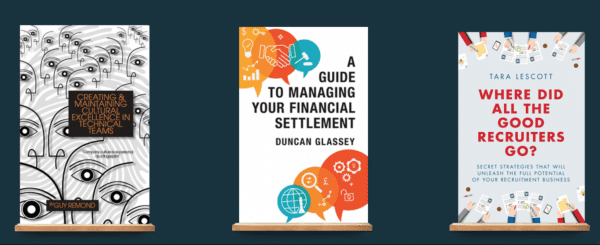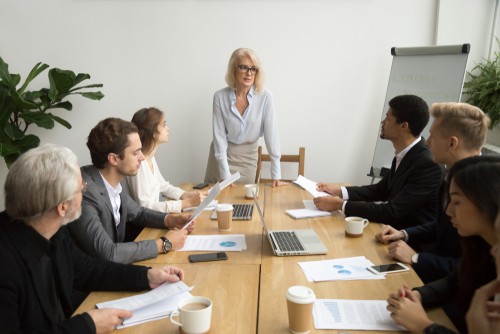Overview
The field of book marketing is one that causes quite a bit of confusion amongst authors. It’s shrouded in mystery with most books, it seems, never really seeing the light of day. What a depressing thought. And it doesn’t help that reliable book marketing facts and figures are surprisingly hard to come by.
In fact, the most recently available stat I can find on the average number of self-published book sales over the course of their lifetimes is from Publisher’s Weekly in 2006. They found that the average self-published title sells just 250 copies in its first year and only 3,000 in its lifetime.
Of course, there are way more DIY marketing channels available to authors now so the real number will be very different. In 2006, Facebook was just becoming available to everyone, not just students. The statistic also doesn’t separate fiction from non-fiction. Non-fiction authors are more likely to be business people and create focussed campaigns. Or do they?

The majority of business owners I speak with are just as baffled by the world of book marketing as the next person. This is a reality for many business book authors although it needn’t be the case. Book marketing is an expansive, vibrant field with no end of strategies available that can help you meet your book-related goals.
This article provides some enlightening book marketing facts and stats that will help you to further understand book marketing and trends, and make strategic decisions about your own book marketing campaign. I’ve organised them into the following categories to make it easier, which can be navigated using the ‘In This Article’ menu at the top of this post:
Marketing Within The Book
Online Records & Metadata
Market Trends
Social Media
Reader Profiling
Promotions
Marketing Within The Book
1) A book’s Foreword is a great piece of book marketing within the book itself. A Foreword is included at the beginning of a book, is written by someone other than the author, known to the ideal reader, and lends credibility to the author and the message within the book (Source: Write Business Results – article on Forewords published on 06/06/2019)
2) Your book marketing and the quality of your book are of equal importance. Your content and design work must be high quality otherwise you’ll lose the best book sales tool: word of mouth (Source: Write Business Results)

3) According to Penguin Random House, if 75% of a book’s sales are in print, even if 60% of those purchases occur online, the best possible book cover for that title is one that works well in print
4) Including your own photo on your front cover is an old trend, replaced more recently by eye-catching fonts, colours and icons or graphics
5) They also say crisper imagery and simpler covers render well online
6) A growing number of people read on their phones, so book covers, interior images and author images must be tailored to fit different screen sizes. It also means that authors need to think about how they can tailor the way in which they connect with readers
Online Records & Metadata
7) Your book’s ISBN is attached to its title. Once an ISBN is allocated, your title can be permanently deleted, but not changed
8) The more metadata elements you can include in your title record, the easier it will be to sell
9) Metadata elements refer to all written, digital records relating to your book. They can include your book’s description, title and subtitle, categories, keywords, your author bio, online reviews, website copy, related blogs and articles, social media posts and bios, and digital ads
10) You can create a widget for your book to promote it digitally and aid online sharing (Source: Nielson)
11) Booksellers and librarians use Nielson’s database to search for books. You can supply your book information to Nielson and edit its information
12) When selling your book online, the inclusion of a cover image has a positive effect on sales (Source: Nielson)
Market Trends
13) Audiobooks are the fastest growing non-fiction book format, with a massive 28.8% growth from 2016 to 2017. However, it’s young people driving this trend with 48% of listeners being under 35 years old (Source: bookriot.com)

14) China reported a whopping 57.8 million published titles in 2016. The U.K. followed (149,443), then South Africa (136,403), France (103,534), the Russian Federation (94,436) and Turkey (93,526) (Source: WIPO)
15) The British publishing industry generates up to £7.8bn GVA for the wider UK economy and supports more than 70,000 jobs in direct, indirect and induced impact (Source: publishers.org.uk)
16) Publishers handle the physical distribution of your book, but not always the marketing
17) Successful book marketing, regardless of channels, media or digital activity, relies upon a pro-active author. It cannot be 100% outsourced, but that also means that as long as the author’s pro-active, the book can buck trends, to a degree (Source: Write Business Results)
18) 2013 was the last year the adult fiction saw higher revenues for traditional publishers than adult non-fiction (Source: Forbes)
19) Adult non-fiction revenue totalled $6.18 billion across the publishing industry in 2017 (Source: Forbes)
20) Ebook sales were down -4.7% for the third consecutive year in 2017 (latest data available) (Source: Forbes)

21) 2017 saw continued double-digit growth for audio books (Source: Penguin Random House)
22) Nielsen BookScan reported that 571 million print books were sold in 2015, 17 million more than the year before. Print books hold their own as people’s preferred format
Social Media
23) Since Instagram introduced IGTV previews into the main feed, IGTV video views have increased at least 300% for most users, and up to 1000% (Source: Penguin Random House)
24) Instagram is the top photography site among teens aged 12 to 17 years, and more than 50% of overall users are under 35 years old. If that is your audience, great. If not, Facebook, LinkedIn and Twitter may be more lucrative platforms for your book marketing (Source: Penguin Random House)
25) The week after comedian Mindy Kaling’s blog tour for her 2015 book, Why Not Me? sales increased by more than 500% (Source: Penguin Random House)
26) International author events can have a strong and lasting impact on sales, particularly in the Philippines. Jennifer Niven, who visited Manila for an author tour right before publication, wrote an introductory letter to readers in the Philippines and printed 2,000 samples featuring the letter and a chapter to hand out during her visit. This customized edition led to a firm order of 20,000 copies. (Source: Penguin Random House)
27) Include your book in your newsletter and your site then track it using Google Analytics’ Campaign URL Builder. It will give you a unique link that will show up as the referral source when your newsletter or website’s analytics are checked
28) Sprout Social’s Landscape saves you the time and effort of cropping your book and/or author image for each specific social media platform

29) According to SocialSorted, photos on Facebook generate 53% more likes
30) The largest online reading community in the world is Facebook, with over 230 million people connected to author Pages and 160 million people connected to book Pages. Include Facebook ads in your overall digital book marketing strategy
31) The Huffington Post reported that interactive storytelling is gaining ground. Think a panoramic, movie-style insight into the book and its author. Interviews, readings, clips, imagery, reviews, the whole lot on multi-media
Reader Profiling
32) More than half of non-fiction books are bought by men (Source: Nielson)
33) Nearly two-thirds of ebooks are bought by women (Source: Nielson)
34) Inc.com reports that the average CEO reads a book a week – 52 books a year whereas the average person only reads 2-3 books all year. That’s a big difference. Think of your ideal reader’s profile and likely reading habits when creating your book marketing campaign

35) Readers like it when you recommend books other than your own. It builds goodwill with your reader community, but it also expands it. Recommend books with a similar target reader to your own on a complementary (rather than competitive) topic and tag the author, book title, publisher and topic (Source: Write Business Results)
36) Rather than age group or gender, Penguin Randon House research found that readers differ most based on how much and how often they read, how much they spend on books, how interested they are in new books and how likely they are to recommend books to others
Promotions
37) 95% of bargain readers (readers who have acquired the book they’re reading at a discount or through an offer) have purchased a book from an author they do not already know because of a price promotion (Source: BookBub)
38) And from the same source, 65% of bargain readers tell their friends about a book they’ve discovered via a discount or promotion
39) Bookbub‘s authors see a 5x higher percent increase in book sales when their discounted book was part of a series rather than a standalone book
40) Content is still king. Content marketing is and will remain the single most important investment an author can make in their careers. This means keep writing; a series of books rather than a standalone book, blogging and social media are must-haves. Having an editorial plan is the secret sauce to being effective with your online strategy, writes Fauzia Burke for The Huffington Post.
What Next?

The Entrepreneur’s Guide to Book Marketing Success is available to buy through the WBR website and on Amazon and Kindle. It unpacks business book marketing before, during and after publishing, and also includes the 80 of the most popular book marketing strategies.
For more information on the done-for-you content support available, click here to contact us securely or email info@writebusinessresults.com.
Overview
The field of book marketing is one that causes quite a bit of confusion amongst authors. It’s shrouded in mystery with most books, it seems, never really seeing the light of day. What a depressing thought. And it doesn’t help that reliable book marketing facts and figures are surprisingly hard to come by.
In fact, the most recently available stat I can find on the average number of self-published book sales over the course of their lifetimes is from Publisher’s Weekly in 2006. They found that the average self-published title sells just 250 copies in its first year and only 3,000 in its lifetime.
Of course, there are way more DIY marketing channels available to authors now so the real number will be very different. In 2006, Facebook was just becoming available to everyone, not just students. The statistic also doesn’t separate fiction from non-fiction. Non-fiction authors are more likely to be business people and create focussed campaigns. Or do they?

The majority of business owners I speak with are just as baffled by the world of book marketing as the next person. This is a reality for many business book authors although it needn’t be the case. Book marketing is an expansive, vibrant field with no end of strategies available that can help you meet your book-related goals.
This article provides some enlightening book marketing facts and stats that will help you to further understand book marketing and trends, and make strategic decisions about your own book marketing campaign. I’ve organised them into the following categories to make it easier, which can be navigated using the ‘In This Article’ menu at the top of this post:
Marketing Within The Book
Online Records & Metadata
Market Trends
Social Media
Reader Profiling
Promotions
Marketing Within The Book
1) A book’s Foreword is a great piece of book marketing within the book itself. A Foreword is included at the beginning of a book, is written by someone other than the author, known to the ideal reader, and lends credibility to the author and the message within the book (Source: Write Business Results – article on Forewords published on 06/06/2019)
2) Your book marketing and the quality of your book are of equal importance. Your content and design work must be high quality otherwise you’ll lose the best book sales tool: word of mouth (Source: Write Business Results)

3) According to Penguin Random House, if 75% of a book’s sales are in print, even if 60% of those purchases occur online, the best possible book cover for that title is one that works well in print
4) Including your own photo on your front cover is an old trend, replaced more recently by eye-catching fonts, colours and icons or graphics
5) They also say crisper imagery and simpler covers render well online
6) A growing number of people read on their phones, so book covers, interior images and author images must be tailored to fit different screen sizes. It also means that authors need to think about how they can tailor the way in which they connect with readers
Online Records & Metadata
7) Your book’s ISBN is attached to its title. Once an ISBN is allocated, your title can be permanently deleted, but not changed
8) The more metadata elements you can include in your title record, the easier it will be to sell
9) Metadata elements refer to all written, digital records relating to your book. They can include your book’s description, title and subtitle, categories, keywords, your author bio, online reviews, website copy, related blogs and articles, social media posts and bios, and digital ads
10) You can create a widget for your book to promote it digitally and aid online sharing (Source: Nielson)
11) Booksellers and librarians use Nielson’s database to search for books. You can supply your book information to Nielson and edit its information
12) When selling your book online, the inclusion of a cover image has a positive effect on sales (Source: Nielson)
Market Trends
13) Audiobooks are the fastest growing non-fiction book format, with a massive 28.8% growth from 2016 to 2017. However, it’s young people driving this trend with 48% of listeners being under 35 years old (Source: bookriot.com)

14) China reported a whopping 57.8 million published titles in 2016. The U.K. followed (149,443), then South Africa (136,403), France (103,534), the Russian Federation (94,436) and Turkey (93,526) (Source: WIPO)
15) The British publishing industry generates up to £7.8bn GVA for the wider UK economy and supports more than 70,000 jobs in direct, indirect and induced impact (Source: publishers.org.uk)
16) Publishers handle the physical distribution of your book, but not always the marketing
17) Successful book marketing, regardless of channels, media or digital activity, relies upon a pro-active author. It cannot be 100% outsourced, but that also means that as long as the author’s pro-active, the book can buck trends, to a degree (Source: Write Business Results)
18) 2013 was the last year the adult fiction saw higher revenues for traditional publishers than adult non-fiction (Source: Forbes)
19) Adult non-fiction revenue totalled $6.18 billion across the publishing industry in 2017 (Source: Forbes)
20) Ebook sales were down -4.7% for the third consecutive year in 2017 (latest data available) (Source: Forbes)

21) 2017 saw continued double-digit growth for audio books (Source: Penguin Random House)
22) Nielsen BookScan reported that 571 million print books were sold in 2015, 17 million more than the year before. Print books hold their own as people’s preferred format
Social Media
23) Since Instagram introduced IGTV previews into the main feed, IGTV video views have increased at least 300% for most users, and up to 1000% (Source: Penguin Random House)
24) Instagram is the top photography site among teens aged 12 to 17 years, and more than 50% of overall users are under 35 years old. If that is your audience, great. If not, Facebook, LinkedIn and Twitter may be more lucrative platforms for your book marketing (Source: Penguin Random House)
25) The week after comedian Mindy Kaling’s blog tour for her 2015 book, Why Not Me? sales increased by more than 500% (Source: Penguin Random House)
26) International author events can have a strong and lasting impact on sales, particularly in the Philippines. Jennifer Niven, who visited Manila for an author tour right before publication, wrote an introductory letter to readers in the Philippines and printed 2,000 samples featuring the letter and a chapter to hand out during her visit. This customized edition led to a firm order of 20,000 copies. (Source: Penguin Random House)
27) Include your book in your newsletter and your site then track it using Google Analytics’ Campaign URL Builder. It will give you a unique link that will show up as the referral source when your newsletter or website’s analytics are checked
28) Sprout Social’s Landscape saves you the time and effort of cropping your book and/or author image for each specific social media platform

29) According to SocialSorted, photos on Facebook generate 53% more likes
30) The largest online reading community in the world is Facebook, with over 230 million people connected to author Pages and 160 million people connected to book Pages. Include Facebook ads in your overall digital book marketing strategy
31) The Huffington Post reported that interactive storytelling is gaining ground. Think a panoramic, movie-style insight into the book and its author. Interviews, readings, clips, imagery, reviews, the whole lot on multi-media
Reader Profiling
32) More than half of non-fiction books are bought by men (Source: Nielson)
33) Nearly two-thirds of ebooks are bought by women (Source: Nielson)
34) Inc.com reports that the average CEO reads a book a week – 52 books a year whereas the average person only reads 2-3 books all year. That’s a big difference. Think of your ideal reader’s profile and likely reading habits when creating your book marketing campaign

35) Readers like it when you recommend books other than your own. It builds goodwill with your reader community, but it also expands it. Recommend books with a similar target reader to your own on a complementary (rather than competitive) topic and tag the author, book title, publisher and topic (Source: Write Business Results)
36) Rather than age group or gender, Penguin Randon House research found that readers differ most based on how much and how often they read, how much they spend on books, how interested they are in new books and how likely they are to recommend books to others
Promotions
37) 95% of bargain readers (readers who have acquired the book they’re reading at a discount or through an offer) have purchased a book from an author they do not already know because of a price promotion (Source: BookBub)
38) And from the same source, 65% of bargain readers tell their friends about a book they’ve discovered via a discount or promotion
39) Bookbub‘s authors see a 5x higher percent increase in book sales when their discounted book was part of a series rather than a standalone book
40) Content is still king. Content marketing is and will remain the single most important investment an author can make in their careers. This means keep writing; a series of books rather than a standalone book, blogging and social media are must-haves. Having an editorial plan is the secret sauce to being effective with your online strategy, writes Fauzia Burke for The Huffington Post.
What Next?

The Entrepreneur’s Guide to Book Marketing Success is available to buy through the WBR website and on Amazon and Kindle. It unpacks business book marketing before, during and after publishing, and also includes the 80 of the most popular book marketing strategies.
For more information on the done-for-you content support available, click here to contact us securely or email info@writebusinessresults.com.
